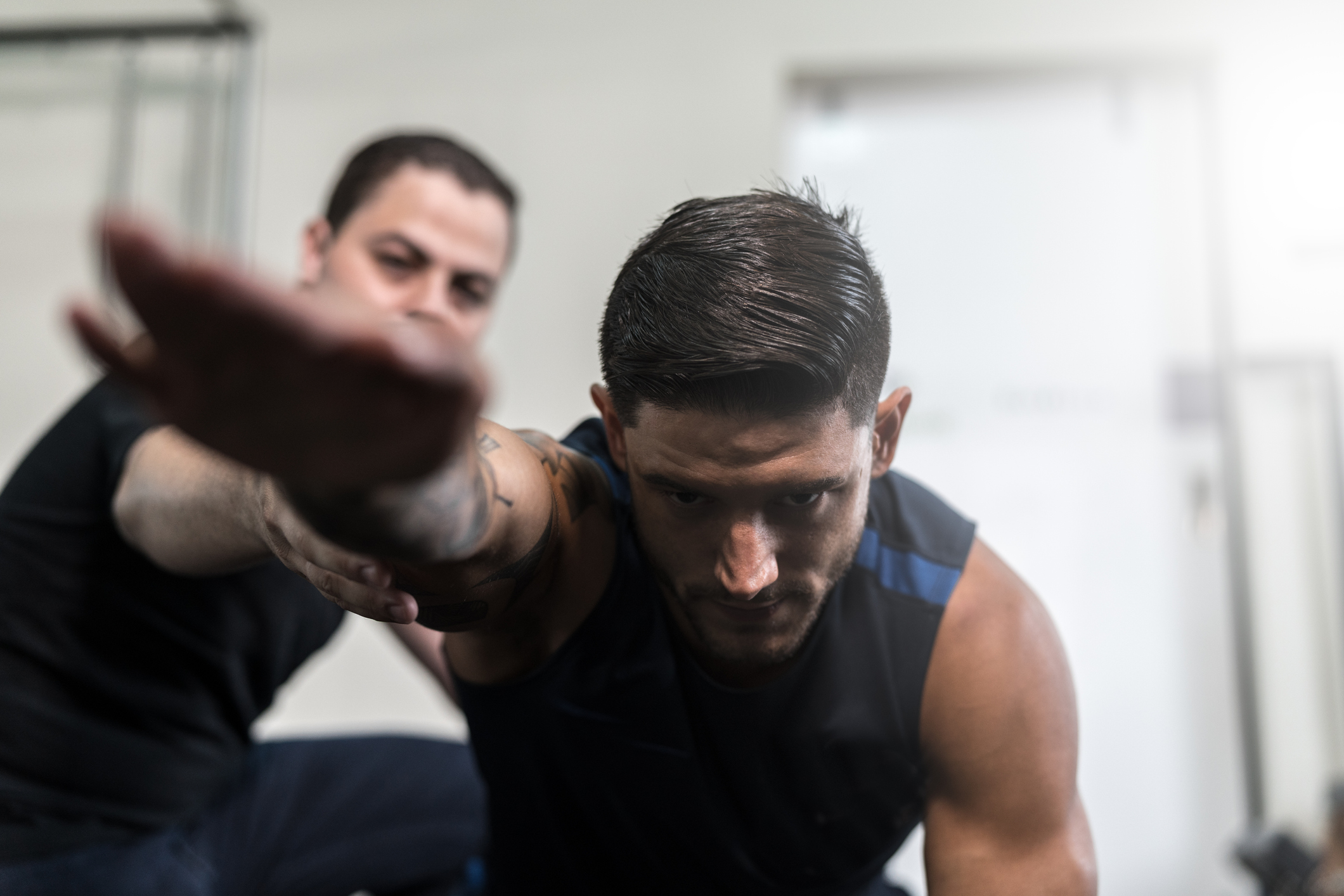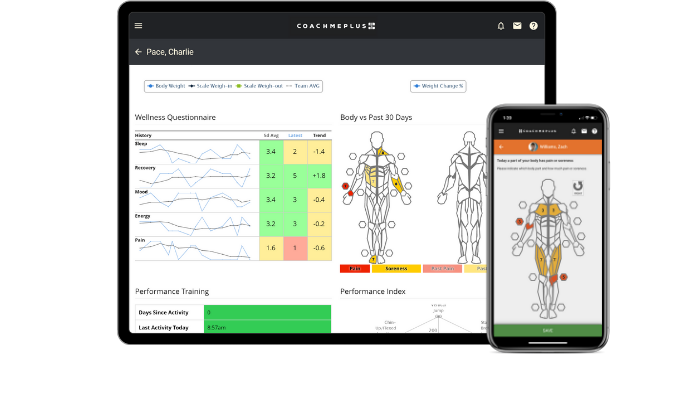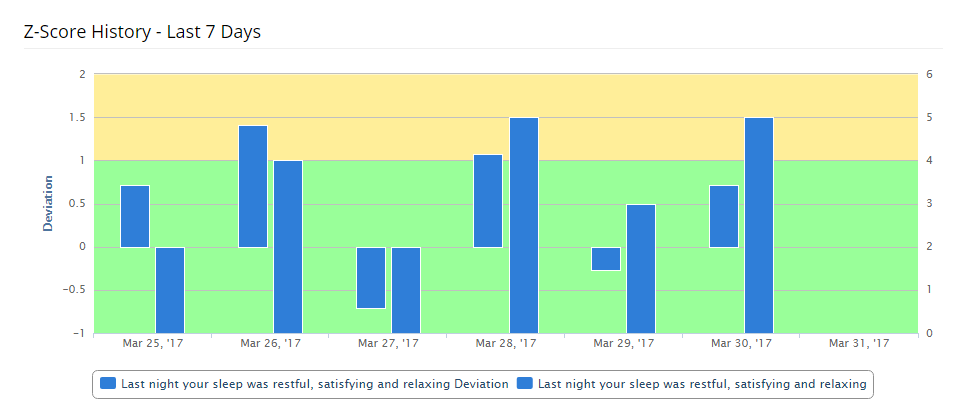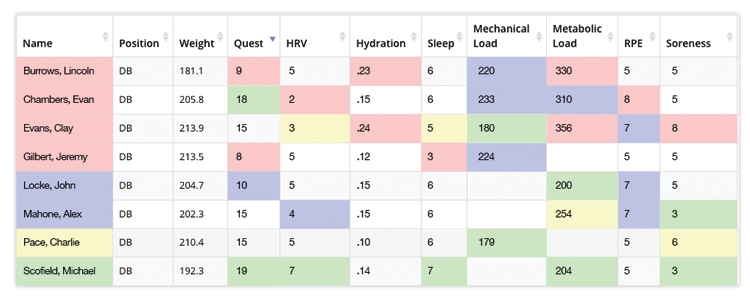
It is an all too familiar sight—the day after a game (hence known as GD+1), as athletes enter the training facility with an ever-evident stiffness obvious from a mile away. You might first notice the rigidity of their walking gait, the gaunt faces from the poor sleep, or their central nervous system fatigue since the recent game. One thing is certainly evident: you do not need dual-force plates or markerless biomechanical screening technologies to determine that their bodies are worn-down, fatigued, and depleted from the previous night’s competition.
This is a performance-world reality. However, it does not need to replay itself week-to-week like a broken and scratched record. Rather than picking up the shattered pieces every GD+1, what if there were a better paradigm within which we could operate? What if we could construct a proactive approach to reducing these undesirable performance outcomes rather than simply reacting to each unique athlete variable as it comes?
ATHLETE WELLNESS QUESTIONNAIRES AND SORENESS

Athlete Questionnaires collect critical information on athlete stress, sleep, and soreness. Athlete Dashboard visualize that information for training interventions
DESCRIPTIVE ANALYSIS MODEL
How can we reduce the negative effects of the GD+1 body? How do we counteract the stiffness, soreness, and fatigue associated with competition? Finding the answer begins with understanding the “feedback loop” relationship between external and internal workloads—and the habits behind them.
One of the first steps to changing any behavior is to better understand the underlying mechanisms and triggers behind the behavior’s feedback loop. Charles Duhigg brilliantly illustrates this concept in detail throughout his book “The Power of Habit.”
Within the first chapter, Duhigg summarizes the research conducted by an MIT research team regarding behavioral feedback loops. He notes how there is a simple neurological loop at the core of every habit, and each loop consists of three parts: a cue, a routine, and a reward.
To understand your own habits, you need to identify the components of your loops. Once you have diagnosed the habit loop of a particular behavior, you can look for ways to supplant old vices with new routines. – Charles Duhigg
Similarly, if we want to reduce the likelihood of negative effects of the GD+1 body, we should examine the physical attributes and conditions that lead to it, i.e. the high-velocity accelerations, decelerations, minutes-played, PlayerLoad, or any other physical external outputs. This is best done by reverse-engineering the game through the usage of wearable technology and positional-data. This data can then fuel our understanding of the complete demands of the sport.
First, we grow our understanding of the typical stressors (descending from macro to micro) placed upon the team, the position group, and ultimately the individual. Then we can gain a better sense of the average, best case, and worst-case scenarios for each respective external metric and KPI like high-intensity bouts of effort, PlayerLoad, and high-speed distance. Once we are able to reliably capture and record session data, we then have the ability to calculate deviations and Z-score calculations from the mean. Without capturing what is typically happening during practice and competition, and subsequently benchmarking those specific physical outputs, it is often difficult to “see the forest through the trees.”
ATHLETE WELLNESS QUESTIONNAIRE Z-SCORE DASHBOARD

PREDICTIVE ANALYSIS MODEL
Once a thorough physical and bio-demand benchmark has been established within your organization and team, we can begin to “predict” how bodies will respond to training. I use the word “predict” loosely because it is largely debated whether we can truly predict with accuracy when it comes to sport. However, we do not need a PhD in integrated physiology to understand that a 200x increase in high-velocity decelerations or high-speed running “may” elicit a non-typical soreness for an athlete who may not be accustomed to those specific workloads. So there is definitely opportunity to forecast, plan, and help shape outcomes—and the right tools, such as wearable tech, can ensure we do this well.
In my opinion, there are two equally important responsibilities behind the correct utilization of wearable technology in the context of sport. The first is accurately capturing and categorizing games, practices, and individual drills. The second, and more challenging aspect, is the subsequent management of team and individual workloads. The latter being a reactionary component by getting ahead of these physical “cost of doing business” outcomes.
Consider this: if the workloads done on the pitch or court are our desired physical outputs, the physiological internal response from those external exertions are “the price which we pay.” It’s important to always consider what we get, and how much we pay for it. For example, if we achieve 200m of high-speed sprinting, we pay for it in several different biological biomarker responses. The benefits should always outweigh the cost.
Understanding the relationship between internal and external workloads allows us to become Nostradamus and “predict the future”. If we know the typical responses to a given training stimulus, we can channel athletes toward different specialists or recovery modalities. While one athlete may benefit from compression garments, another may reap more benefit from performing a lower-intensity cardiac output session.
TEAM AVERAGE RPE AND POLAR TRAINING LOAD DASHBOARD

PRESCRIPTIVE ANALYSIS MODEL
A great benefit to having data from wearable technology is that we can find the right solution for the right problem. Not every situation calls for foam rolling and stretching.
We should aim to prescribe bespoke options of recovery that are individually tailored to the athlete and their respective physical outputs from which they are attempting to recover. For example, muscular soreness should be approached differently than neuromuscular fatigue.
If all you have is a hammer, everything will look like a nail.Remember: one critical component of athlete monitoring is establishing a benchmark and monitoring the fluctuations from those individual norms. Once we recognize a large deviation from an athlete’s typical outputs, we can begin to select the most appropriate tool to facilitate optimal recovery.
Drawing a cognitive line from a physical output (and the subsequent physiological responses) to a few recommended recovery strategies can be incredibly helpful. At best, try to mentally automate this process through appropriate “If This, Then That” (IFTT) decisions. I have found creating laminated “recovery sheets” extremely practical and will hand them out to athletes based on their individual needs.
Another real-world strategy might be listing several recommendations for common best practices in nutritional/supplementation interventions, low-intensity recovery rides/runs, usage of compression garments, practitioner-led massage work, the use of soft-tissue devices and instrumentation, cold-water immersion, temperature contrast methods, photobiomodulation therapies (PBMT), sensory-deprivation float tanks, and/or meditation, etc.
ATHLETE CALORIC ENERGY DASHBOARD

ARTICLE SUMMARY
If you want to know where to go, look to where you began. If you are attempting to use wearable technology to assist the identification and prescription of recovery modalities, begin with benchmarking the typical normative values of each game, practice, and drill. You do not need advanced degrees, years of computer science experience, or the latest statistical software to understand that large deviations from mean values will affect how athletes feel and respond to training.
As your data repository continues to grow, you will soon have the ability to assess that dataset with a level of statistical rigor.
In order to expedite your prescriptive program design, create a clear blueprint that maps out specific recovery modalities depending on the external outputs your athletes produce. If an athlete performed a higher than normal amount of high-velocity decelerations, you may benefit from utilizing a different recovery strategy than the athlete who exceeded their total distance norms.
Create a hierarchy of recovery modalities that each athlete must funnel through as they progress through their recovery program. Begin with the simplest solution and allow your athletes to progress to more advanced modalities of recovery.
Try different approaches and iterate as needed.

Recent Comments